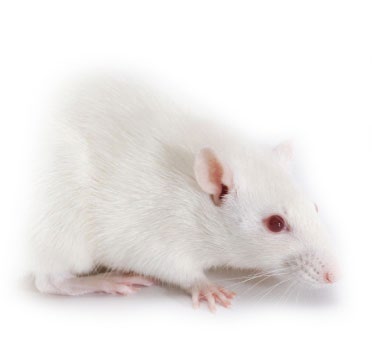Rag1 knockout rats (Sprague Dawley)
HsdSage:SD-Rag1em1Sage

Strain
Location
Order Today
Typically heterozygous rats are cryo-recovered in 10-12 weeks to an age of 7 weeks old. Subsequently homozygous rats to an age of 7 weeks old can be produced within 20-22 weeks.
- 29 bp deletion within Exon 2 on chromosome 3
- Homozygous Rag1 knockout rats display loss of RAG1 protein via Western blot
- Homozygous Rag1 knockout rats show loss of B and T cells by FACS analysis
- Background Strain: Sprague-Dawley
Availability: Cryopreserved as heterozygous embryos
Zygosity: Homozygous as live colony
Recombination Activation Genes (Rag) encode enzymes that play an important role in the rearrangement and recombination of the genes of immunoglobulin and T cell receptor molecules during the process of V(D)J recombination. Rag1 knockout rats lack mature B and T lymphocytes.
Mature B and T cells are critical components for an adaptive immune system. Rats deficient in Rag1 protein produce no mature B or T cells. This non-leaky model for severe combined immune deficiency is useful for vaccine development, as well as the study of autoimmune and infectious diseases.
Origin:
The Rag1 Knockout Rat | Sprague-Dawley model was originally created at SAGE Labs, Inc. in St. Louis, MO and distributed out of the Boyertown, PA facility. The line continues to be maintained through the original SAGE Labs animal inventory acquired by Envigo, then Envigo was acquired by Inotiv in 2021.

Available regions:
For pricing information, please contact us using the phone number above.

Research use and related publications
- Oncology
- Cancer metastasis
- Hematopoieses
- Immunology
- Inflammation/Autoimmune disorders
- Infectious disease
- Thrombosis/Cardiac fibrosis
- Vaccine development
- Vascular defects
- Xenograft





